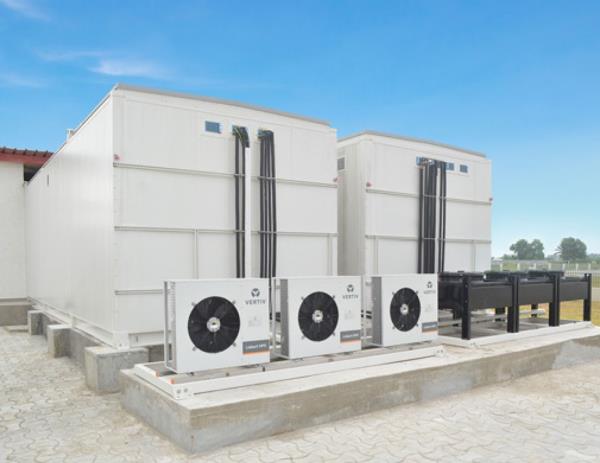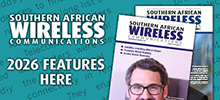07 August 2023

The company’s journey has not been an easy one, presenting a range of technical, financial, and regulatory hurdles to overcome. Nearly half of all capital projects in West Africa experience delays of over six months.
Connecting West Africa
Back in 2010, there was very limited ICT infrastructure in West Africa to support such a business case. Nevertheless, it began with the deployment of a landmark undersea cable from Europe to Nigeria, bringing much needed high-speed internet to the region.
The world-class submarine cable system is the first privately owned cable in West Africa. Spanning 7,000km with a capacity of 10Tbps, currently the cable connects Africa to Europe via a landing in Portugal and multiple routes to London, Paris, and Amsterdam. Paired with a state-of-the-art IP network, new dense optic wavelength division multiplexing (DWDM) technology and data centre facilities, MainOne provides the capacity for enterprises and smaller ISPs to enable broadband solutions for businesses across the region.
Prior to MainOne’s entry into the market, the limited undersea cable connections held back the development of West Africa’s internet infrastructure. When cables began to land, under-developed distribution networks meant they remained virtually stranded on the coastline, unable to deliver the services required to push internet access in-land. Indeed, one of the first major challenges MainOne encountered came from the lack of a metro fibre infrastructure and terrestrial cable networks in Nigeria. Such networks are necessary to provide access and push the traffic to various customers around the country. The undersea cable connection triggered investments in metro fibre infrastructure for the country’s most populous city, Lagos, and more recently in the states of Ogun and Edo.
Subsequent connectivity and power infrastructure developments have upgraded the quality of internet service to millions of users in these regions and greatly improves broadband access. It also triggered corollary benefits, such as employment generation, increased productivity, increased access to knowledge, and improved economic opportunities for the region’s inhabitants.
Meeting exploding demand
MainOne has grown with the huge demand to become the leading provider of wholesale and enterprise connectivity and data centre services across the West African region, and partners with major global technology companies to deliver quality services to its customers.
To meet the growing demand for managed computing and network services, in 2015 it commissioned MDXi, a Tier III data centre and the largest in West Africa. MDXi granted direct access to MainOne’s entire connectivity platform including fibre optic and internet backbone network access, while also providing interconnection with all the major networks in Nigeria. As a result, organisations across the country were able to move their key business processes online, rapidly accelerating the evolution of a digital economy in Nigeria. MDXi also partnered with Asteroid, a global IXP platform provider, to launch a carrier-neutral internet exchange point for West Africa — The West African Internet Exchange (WAF-IX). With the objective of complementing national IXPs, the new internet exchange improves regional data traffic and ultimately fosters the development of a digital economy across the whole of West Africa.
Meanwhile, in 2018, MainOne partnered with Orange for co-investment in extending its submarine cables into two new cable landing stations in Dakar, Senegal, and Abidjan, Ivory Coast. This was the next logical step in its region-wide mission, the stations will benefit several under-served countries in West Africa with better connectivity at lower prices as well as access to new services. These partnerships and infrastructure investments, in addition to support for technology hubs and startup companies, boldly underline MainOne’s vision for a better-connected region. The additional bandwidth these countries gain will also boost the development of fixed and mobile data to meet the increasing demands for Internet access via 3G and 4G networks.

The major challenge in the Ivory Coast was the location of the cable landing station and data centre site. Colocating a data centre with the landing station ensures accessibility of the data centre content to local and international nodes, but MainOne had to find an elevated coastal location with a gentle gradient. The site had to be within 5km of its beach manhole but avoid salinity issues associated with coastal data centres, while also offering a reliable clean power supply for rack cooling in this tropical environment.
The landing station and data centre are located close to the Atlantic, built from prefabricated modules for flexibility and ease of expansion. The site provides an uninterruptible clean power solution, ensuring a controlled internal and external environment, and built with marine grade equipment as standard to protect against salinity. Other challenging requirements included IT efficiency, low OPEX, high availability, and high flexibility.
A scalable partnership
According to Funke Opeke, CEO, MainOne, the company had three key requirements for a successful vendor partnership.
“We needed to be confident of a vendor who had an established in-region presence in the region with skilled people who understood the nuances of Africa and West Africa,” said Opeke. “As our business is scaling, we needed a solution and a vendor who could scale with us. As time is always against us, a solution and vendor that we could rely on to rapidly deliver the solution we needed was critical.”
MainOne required a cable landing station and a 10 racks data centre for its site in Abidjan, Ivory Coast, that serves the 7,000km submarine cable system running down the coast of West Africa. Vertiv supplied a prefabricated cable landing station module for 20 telecom racks. This integrated solution consisted of two NetSure™ 7100 cabinets with seven rectifiers each, in a 2N configuration; a battery system providing 4 hours of back-up at full load; and three Liebert® HPS014 cooling units.
The second module will be a Tier III compliant SmartMod prefabricated data centre, consisting of a 2N power system configuration; two Liebert APM UPS with a 27’ backup time; three Liebert CR021RA direct expansion cooling units in a N+1 configuration; and 10 x Knurr Miracel IT racks with two Liebert MPE PDUs each. In addition to access control, fire detection and suppression, and CCTV equipment. The tailored solution needed to meet an aggressive deadline and be ready within less than six months including the full turnkey project. The Vertiv IMS team was responsible for the design, factory acceptance testing and shipment, local installation, and provided commissioning of the prefabricated buildings.
Going forwards, MainOne will continue with its mission to bring internet connectivity closer for all West Africans.
“We are fully committed to deepening broadband access via investments in fibre infrastructure and data centres across West Africa,” said Funke Opeke, CEO, MainOne. “Using our 100G international submarine cable system, we aim to guarantee highly reliable connectivity to support the growing demand for Internet access in 10 countries; Nigeria, Ghana, Ivory Coast, Burkina Faso, Togo, Cameroun, Benin, Niger, Senegal and Chad.”







